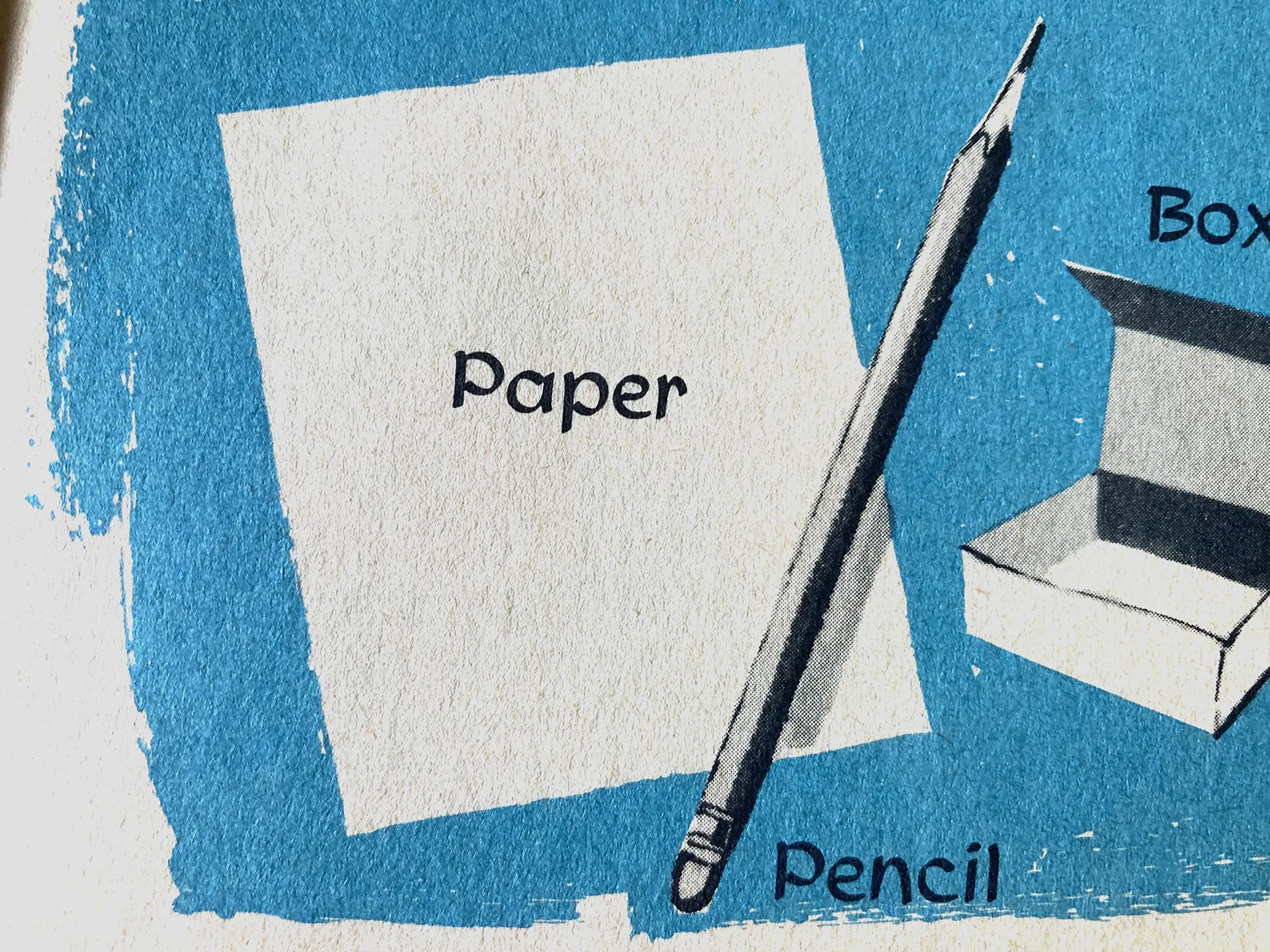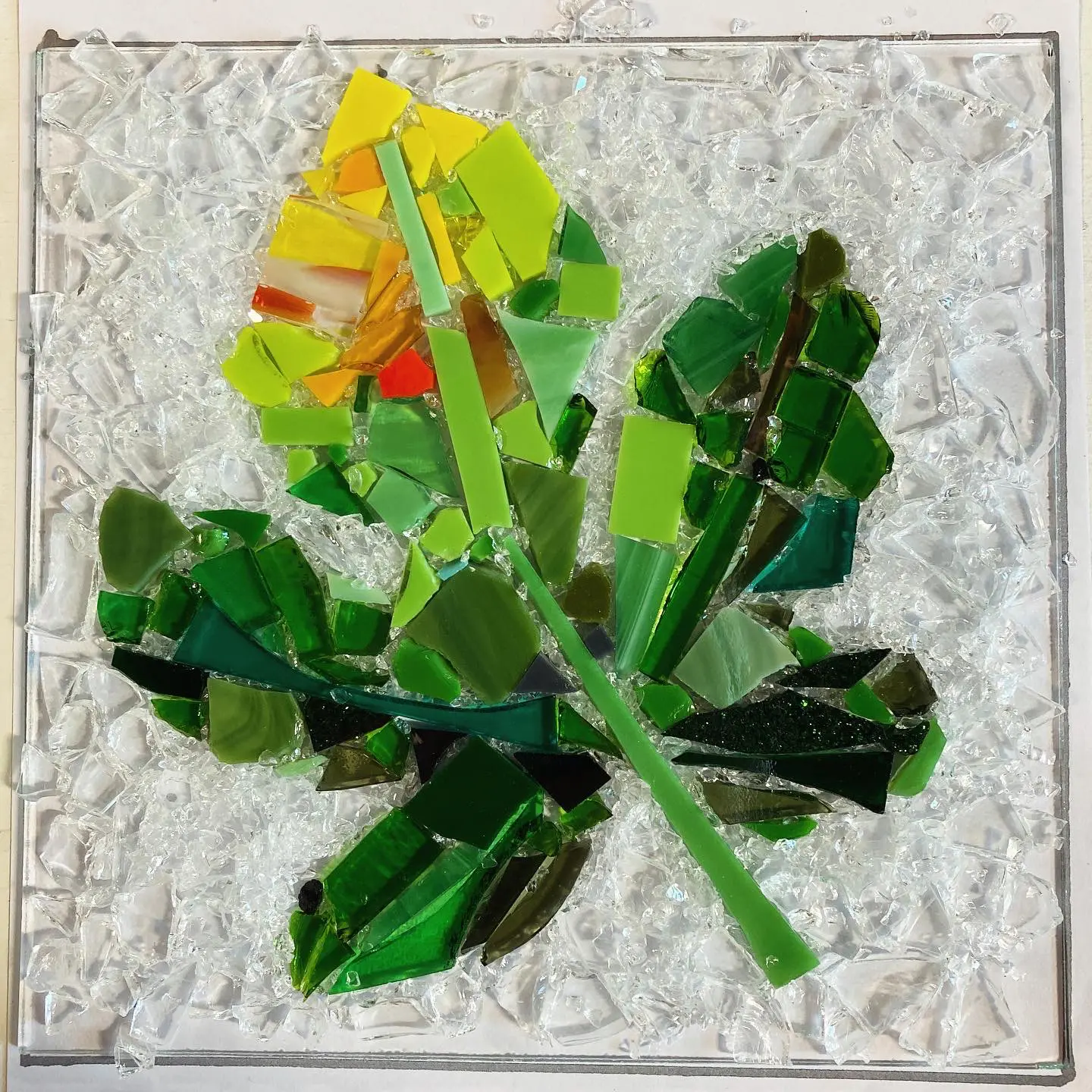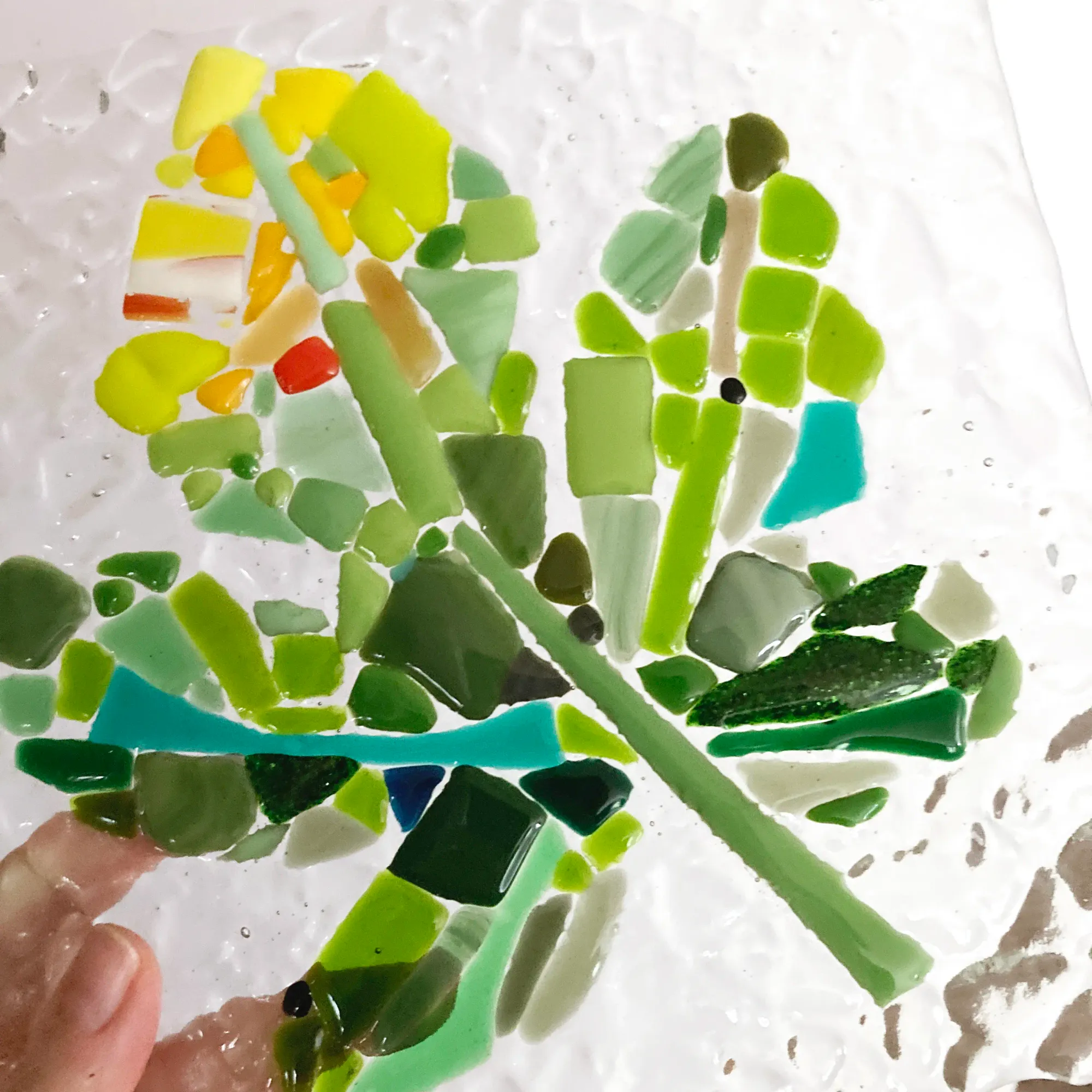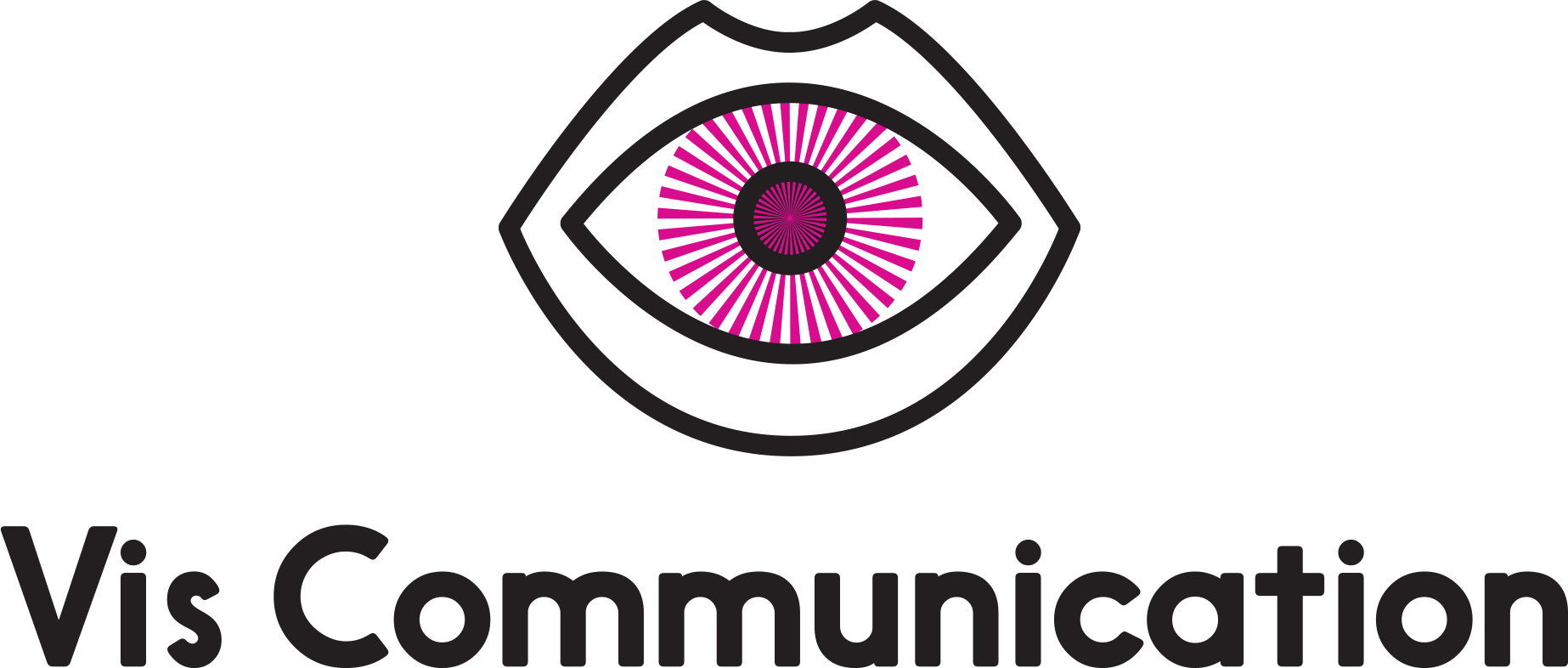The Blank Page
"There's nothing more exciting and daunting than the blank page. Oh, that's good. Maybe I'll do a book of quotes." – Principal Brown, Booksmart

I went to a fused glass workshop recently – the results are below. They set everyone up with a clear piece of glass for the base, and a piece of paper you could draw your design on. There was access to all colors and types of glass and other materials you needed to make your piece.


Before and After firing. Full disclosure, I didn't really do a drawing to prep – I simply did a rubbing of a fig leaf from my yard.
Not ten minutes into class a student who was a young adult asked if there were any templates she could use for her design. And this is the hill I might die on – that templates for absolutely everything make us lazy thinkers. I wrote about this in a software context here.
I totally get that sometimes people go to these types of classes to relax. I’ve been to those “paint your own” pottery classes where the real point is to hang out with friends and drink cheap wine. I also really love putting together Legos where it’s about building the thing more than designing the thing. I design for a living, so it’s relaxing when someone else has done the design for me and I can concentrate on putting all the tiny pieces together.
The other thing she did was get very close to finishing her piece and then totally scrap it for another idea more than once.
The quote at the top of the page is from a movie, but it is true – a blank page (or piece of glass) can be daunting. But designers and artists have some techniques for working through this that may be helpful if you find yourself in this situation.
- Have some idea in your pocket. I knew I would be designing a glass tile, so I came with a drawing. I also knew I could decide to abandon that drawing for another idea, but having that going in immediately takes pressure off.
- Sketch. Sketches don’t have to be pretty. They can only serve to help your brain work out the idea or how big something should be or whether you want to add something else to it.
- Be inspired by the materials. Some folks in the class went immediately to the bins of colored glass and found shapes or colors that they liked. You may want to experiment for a few minutes to see what the material (any material) can do. Can you make a thick or a thin line? Can the shapes be fit together? Is the material see through or opaque? Can you layer it? Do you like small shapes or big shapes? The list can go on forever. When you experiment and immediately think, "ooh that's cool" then run with it. Too much second-guessing = death.
- Don’t give up on an idea too soon. Before you decide something isn't working, give it time. At a certain point, you have to commit and see it through. I think sometimes it’s fun to make a decision and figure out how to make it work. Maybe the idea itself isn’t bad, but you need a different way of executing it. That’s a kind of problem solving that I think is fun. I know I’m weird.
- Sometimes ideas will not work out. Call it an experiment and move on. There's no need to beat yourself up about it. You are literally the only person in the room upset about it.
I am seriously not here to rag on templates (again), and I think they have their place. But doing the mental work of overcoming the blank page, working through experimentation and ideas, and committing to an idea to see where it can go, is really, really good for us. And think how many more original works will be in the world. I’ve been picking on this woman from class, but what she ended up doing looked great, and was way more interesting than any template she might have been given. And I do hope that gives her some confidence to do her own thing next time without stressing about it.

